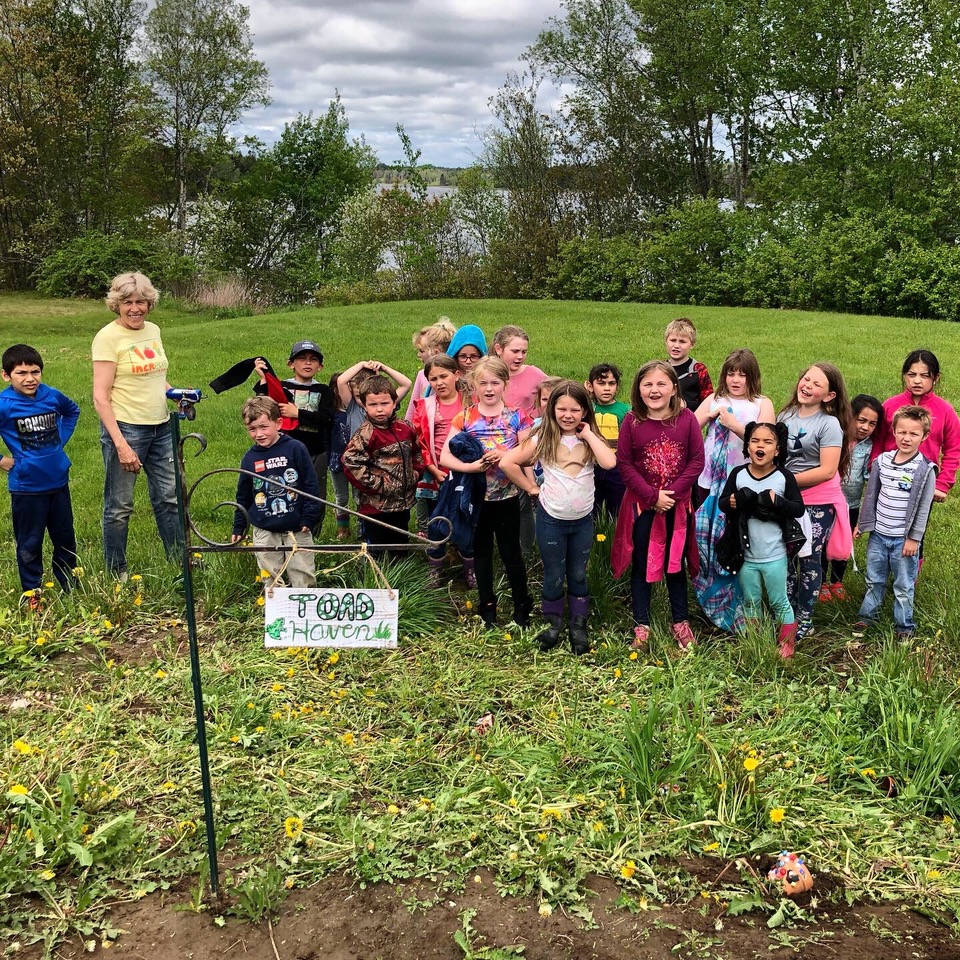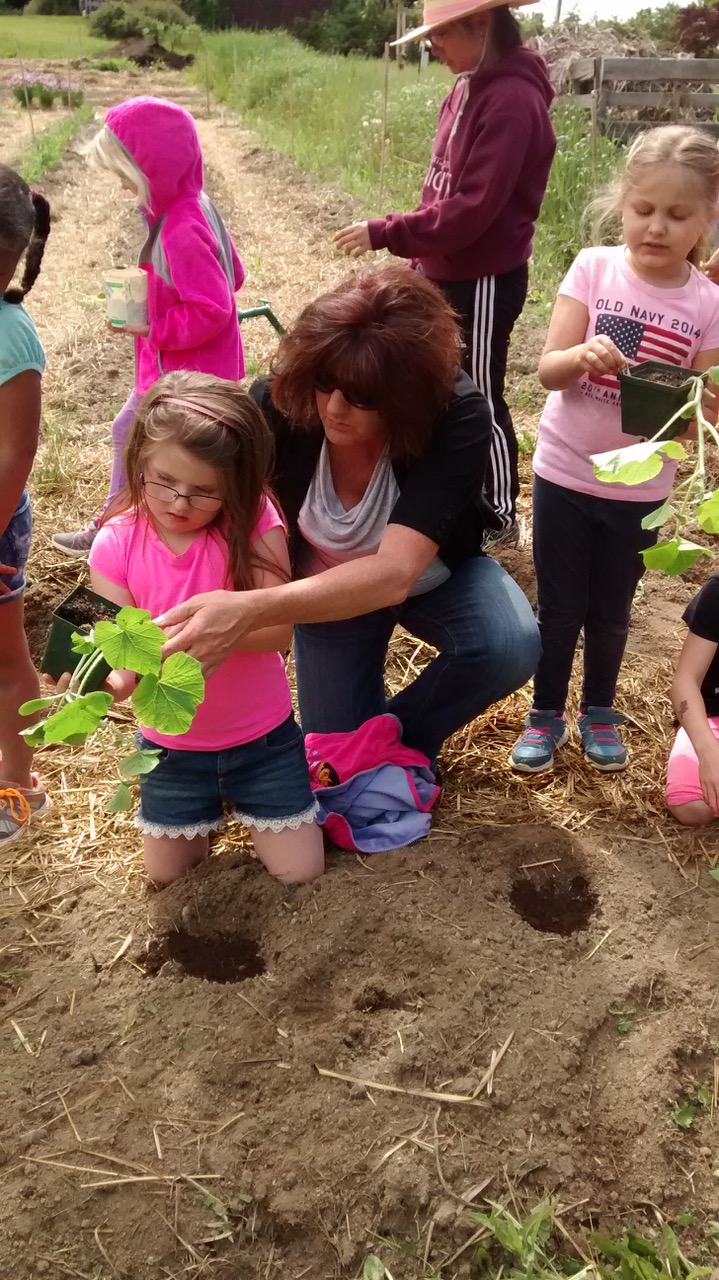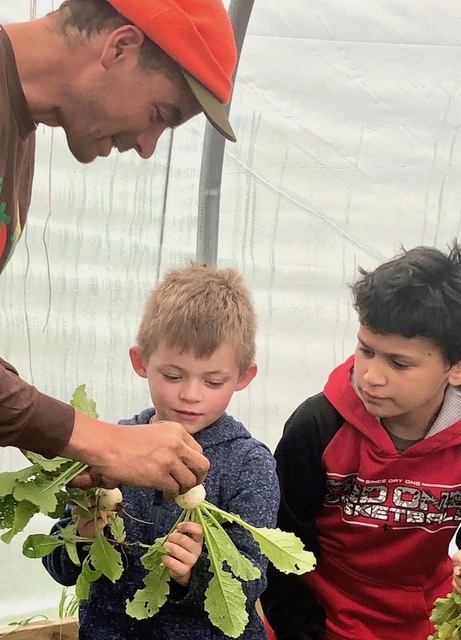Teacher Helps School Become Health Ambassador

“It’s astronomically expensive to buy fresh fruits and vegetables, but I can get six Little Debbie snack cakes for $2,” says pre-kindergarten teacher Suzen Polk-Hoffses. She lives in Milbridge, a coastal town of less than 1,300 people located in the county with the highest poverty rates in Maine. Fortunately, she and the students and teachers at Milbridge Elementary School are now six years in on an effort that directly counteracts these trends.
The journey began when Women’s Health Resource Library (now Women for Healthy Rural Living) started Incredible Edible Milbridge (IEM). Modeled after Incredible Edible Todmorden, a community effort in the United Kingdom, the project increases community health by planting vegetable gardens open to everyone.
During the early days in 2014, as IEM began connecting with businesses and establishing small gardens around town, people started asking, “Why are tomatoes growing in front of the bank?” The challenge? People weren’t accustomed to simply taking free fruits and vegetables, and they often wouldn’t know what to do with them if they had them. That’s when Polk-Hoffses’ enthusiasm inadvertently jump-started the program.
When IEM program coordinator Pam Dyer Stewart organized some of the first free hands-on gardening workshops, pre-kindergarten teacher Polk-Hoffses was one of the first attendees. With no previous gardening experience, she was hooked and immediately set to work engaging her students and other teachers and classrooms. “She soon became the Incredible Edible ambassador at the elementary school,” says Dyer Stewart.
 The program continued to expand with the addition of a 10,000 square foot space donated by the Red Barn Motel in the fall of 2014, fully planted by local partner, Folklore Farm owner Michael Hayden. As the season came to a close, they planned to donate excess harvest to the local food pantry. But to their surprise, all through word-of-mouth, the gardens were picked clean. When a woman approached a board member who was carrying an Incredible Edible tote bag and said, “When I was too embarrassed to go to the food bank, this garden saved me,” they knew an important shift was happening. Part of the reason was the local children.
The program continued to expand with the addition of a 10,000 square foot space donated by the Red Barn Motel in the fall of 2014, fully planted by local partner, Folklore Farm owner Michael Hayden. As the season came to a close, they planned to donate excess harvest to the local food pantry. But to their surprise, all through word-of-mouth, the gardens were picked clean. When a woman approached a board member who was carrying an Incredible Edible tote bag and said, “When I was too embarrassed to go to the food bank, this garden saved me,” they knew an important shift was happening. Part of the reason was the local children.
The kids brought the enthusiasm to their parents and grandparents. “They took veggies home with recipes and they said, ‘let’s cook this,” says Women for Healthy Rural Living Executive Director Christine Kuhni.
By 2016, Polk-Hoffses enthusiasm had rubbed off on the whole school. Teachers in every classroom incorporated gardening into their lesson plans and took the students on field trips. Every class came to the Incredible Edible Garden in the spring to help plant vegetables. The food fostered connections between students, and families began getting outside more as their kids led them through the gardens.
Seeing the success of their first efforts, Women for Healthy Rural Living looked for another space on the other end of town. They found property and approached Maine Coast Heritage Trust who agreed to buy the land and help them develop it with a phased plan engaging the whole community. In 2018, it opened with a five-acre park and waterfront garden.

Soon, other nonprofits in the county got involved. The Cobscook Institute brought its trauma and equity-informed program Tree (Transforming Rural Experience in Education) to the Milbridge school to collaborate on garden time. A collection of community groups collaborated on a harvest festival in the park. That led to the creation of a formal collaborative, Down East Roots.
 All that from one simple idea: this town, like any community, deserves healthy food. And because of one enthusiastic pre-kindergarten teacher as a catalyst, the community took the idea and ran with it. Now, in addition to a more coordinated network of nonprofits, there are accessible gardens with vegetables for everyone and fruit in the works, and kids and families all learning together how to grow, harvest and use the produce. The garden signs are in English and Spanish and pathways accommodate walkers, wheelchairs and canes. This clears the way for elderly people, young people, and adults with physical or visual impairments, including Polk-Hoffses husband who has Parkinson’s disease. “It’s wide open,” says Polk-Hoffses. “There is no gate keeper. You can go right on in.”
All that from one simple idea: this town, like any community, deserves healthy food. And because of one enthusiastic pre-kindergarten teacher as a catalyst, the community took the idea and ran with it. Now, in addition to a more coordinated network of nonprofits, there are accessible gardens with vegetables for everyone and fruit in the works, and kids and families all learning together how to grow, harvest and use the produce. The garden signs are in English and Spanish and pathways accommodate walkers, wheelchairs and canes. This clears the way for elderly people, young people, and adults with physical or visual impairments, including Polk-Hoffses husband who has Parkinson’s disease. “It’s wide open,” says Polk-Hoffses. “There is no gate keeper. You can go right on in.”
Teacher Helps School Become Health Ambassador | Women for Healthy Rural Living
